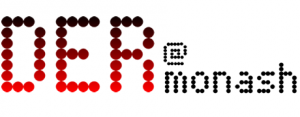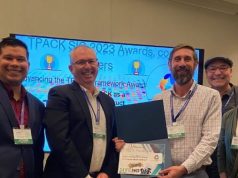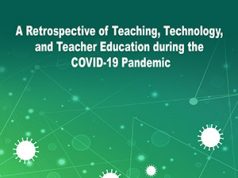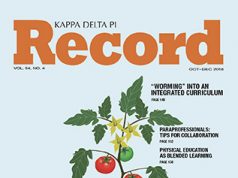 Dr Edwin Creely
Dr Edwin Creely
Faculty of Education, Monash University
The encroachment of digital technologies and digital devices in the English secondary classroom and into the pedagogy of literacy educators and the materiality of writing practice has been ongoing and persistent over the last 20 years, with a considerable volume of academic and professional writing reflecting both the possibilities and the deficiencies of digital technologies (for example: Haas, 1996; Tyner, 1998; Coiro, 2008; Flood, 2008; Ng, 2012; Alvermann, 2015; Spiro, 2015; Mills, 2016).
There are advocates who see it as opening up new vistas of expression and literacy in the digital age, and who also argue that the incursion of technology into literacy and English teaching practice is inevitable, even desirable, because it enhances the agency and potential of students and decentres the authority and dominance of the teacher as pedagogue (John, et al, 2009; November, 2010; Selwyn, 2014; Bruce & Chiu, 2015; Crang, 2015; Piotrowski & Witte, 2015; Yáñez, et al, 2015). There are also the critics who point to the significant problems with fully embracing digital culture in the classroom (Hayes, 2015; Vrasidas, 2015). Not the least of these problems is the seeming decline of core literacy skills, the issue of technology-as-distraction and the reality of authenticating students’ written work, or, to put it not so politely, cheating and plagiarism (Taneja, et al, 2015). The ongoing conversation about the right place and the best-practice for the integration of digital devices in the classroom has not diminished in educational research and among teachers who deal with its complex and sometimes fraught application in school settings, including issues of equity (Warschauer, 2004).
If I was to walk into some English classrooms in Australia, perhaps in well-funded schools, I might note tablets, laptops and personal mobile devices being employed as explicit and implicit modalities of educational delivery. I might notice teachers and their students consuming media, accessing online knowledge databases and creating text and media. They may even be using these devices as digital gateways or conduits to social media (in all its varied forms), virtual reality (VR), online gaming, video repositories such as YouTube and Cloud storage platforms such as iCloud and Dropbox. Thus, there is an apparent diversification of knowledge sources and a rapid increase in the pace of delivery of such information into classrooms, possibly making them more contested and problematic learning spaces compared to what was experienced in previous decades.
This ideology of the connected classroom seems so visionary and so full of affordances compared to the classroom that students experienced decades ago (Gasser & Cortesi, 2015). Yet, look more closely in a particular classroom and you may see the quiet tribulations emerging such as software issues, disconnection problems to the Internet, online bullying and disaffection with the work set for students because of the new virtual stimuli open to all students. Teachers are thus having to take on roles of surveillance that, it could be argued, take away from the core business of teaching (Beck, 2015).
It is common now to see student work published in forums, specialist websites and stored in Cloud repositories for other students to access. Indeed, through Instagram, Facebook, YouTube, Twitter, and the like, we are seeing the collapse of differentiation between private/personal spaces and public/educational spaces, with cross-over effects that are both positive and negative and that impact what is happening both academically and socially in the classroom (Bjørgen & Erstad, 2015). School administrations have to deal with the fallout from the intrusions of the private and social world of students into the educational spaces of school, intrusions induced by social media and the immediacy of exchange and communication afforded by digital communication devices.
Dispersed and rapid publishing of student work is also possible in the connected English classroom. Free online blogging sites, such as WordPress, enable students (indeed anyone) to publish their writing and present it to a world-wide audience. Text, graphics, animations and videos are often combined into hybrid or multimodal texts of often considerable complexity (Jewitt, 2006; Davies, 2015). Students can now, as a matter of course, message and inbox their teachers to get assistance. They can also submit work for assessment and receive feedback digitally through exchanges outside the traditional spaces of school. In some schools the entire curriculum is delivered online, through cloud based software such as SEQTA and MOODLE, which can be viewed and accessed by all agents in the educational process: students, teachers and parents. In such a mode of delivery, there seems little need for students to take extensive handwritten notes any longer because it is all available online.
The transformation seems epochal from the classrooms that educators worked in 20 years ago, or at least that is what the enthusiasts, the techno-imperialists, would want us to believe. That is the line of Apple Inc. and other technology companies. The cynic in me suspects that this is no more and no less than a well-funded marketing exercise and thus may not reflect the on-the-ground realities of working with technologies in the classroom (see Jones, et al, 2015). At the same time, who can argue with the ubiquity of digital devices, such as the iPad or iPhone, as primary communication devices that have substantially replaced the art of letter writing and the therapy of hand written journals?
However, alongside the supposed cutting-edge digital and connected classroom that apparently reflects this new epoch, where knowledge is sought, knowledge is created and knowledge is evaluated through online sites, and where apps are as much a part of teaching as textbooks, sit the pen and the pencil. This apparently timeworn technology of writing, together with the medium of paper, is juxtaposed, in an uneasy paradoxical relationship, with digital devices.
I say timeworn technology because the pen and the pencil appear to evoke memories of another time and another world: the analogue world where the art of writing was visceral and haptic and where the skill of producing a script was venerated. Perhaps the importance of handwriting and the use of the pen have diminished because the student with messy writing can legitimately say that the work can always be done on a computer or tablet, and, after all, it is easier and more convenient.
The question has to be asked: how long can the pen survive? Is the pen virtually dead in the digitised English classroom?
Answering this question is not exactly easy. So much of the educational disposition towards the pen and its place in the mix of textual production and consumption in the English classroom depends on the pedagogy of a particular school, the levels of funding of technology (and that is a whole can of worms) or the outlook of a particular teacher, who may be anywhere on the continuum of techno-ideology from neo-Luddite to digital prophet (Karaseva, et al, 2015; Neiss, 2015; Shawn, 2015).
In this regard, as a general trend, it is likely that older English and literacy teachers, whose literacy experiences were forged in the analogue era, might find the possible disappearance of the pen a difficult transition indeed (Berk & Weil, 2015; Kroksmark, 2015). They might not be enthusiastic about running off to an iPad training day or learning how to create a blog for students to display their work. It is hard to let go of the blackboard or the whiteboard and embrace digital projection and the possibilities of connection to the myriad sites and worlds of the Internet, many of which are untested in terms of their academic veracity and safety (which in itself is a serious pedagogical issue for English educators). There is also a nostalgia about the link between expressive writing, writing as therapy and the tradition of the pen (Adams, 2014.
In addition, the assessment requirements of English and most other subjects in secondary education, especially for the senior years, is dependent on the production of a physical script with a pen, created under prescribed and limited conditions. Whilst there has been talk about how this might shift to digital input, the reality of the here-and-now is that the pen, though it might be a timeworn analogue technology, still holds centre stage alongside digital devices.
The literacy educator is thus left with a conundrum: how shall I skill my students in the use of pen-and-paper, traditional note taking and the like, whilst, at the same time, embracing digital devices and technologies in a classroom orientated to the future? How indeed? Such a mix and complex pedagogical layering of literacies is not so easy to negotiate. The pen must be there but so must the accoutrements of this digital, online age. Is this potentially a marriage of convenience or is it a marriage made in heaven or hell?
To this complexity there is added the suggestion in recent research that there is an intrinsic connection between cognition and learning on the one hand and the use of the pen on the other (Bazerman , 2008; El-Dayem, et al, 2015; Graham, et al, 2015; Wicki, et al, 2014) . It may be the case that the brain and the hand are so connected from our evolutionary biology as human beings that the haptic experience with a pen is foundational as a tool of communication, recordkeeping and learning (Whitehouse & Atkinson, 2013).
This perspective may also evoke the question about whether learning with pen in hand or with keyboard, voice or touch as primary input modalities are fundamentally different learning experiences with distinct outcomes (Stapleton, 2012; Beckman, 2014). Indeed, in entering virtual digital worlds such as Second Life, for instance, and deploying augmented realities is the learning altered from that experienced through drawing or writing with a pen and imagining such a world (Savin-Baden, 2016; Meritt, 2015)? In sum, in moving to computer-based, digital and connected online learning environments is the fundamental nature of literacy and how students learn being shifted? Shifted to where? According to Åkerfeldt (2014), writing with a pen and writing using digital modalities are different resources with alternate possibilities, and each comes with its own delimitations (Edwards-Groves, 2012).
So, is the pen dead? Or is it about to die?
In truth, despite assurances that we are now fully digitised as a society, with even cash being touted for extinction, I believe that we still reside in the uncertain transitory space between the analogue (with the pen being just one expression of it) and the digital (Mann, 2015). There does not seem to be enough compelling evidence that letting go of the pen will benefit education, and, worse, there is a suspicion that jettisoning the pen (if that is really possible) may have consequences that we cannot predict.
It is an interesting phenomenon that the analogue music record has experienced a comeback and that some Gen X and Gen Y young people, seemingly steeped in digital online connectedness though music streaming providers, are embracing it and acknowledging its differentiation from digital music recording. Perhaps, alongside the online digital world, the pen and the traditions of writing will maintain their place in the literacy and communication pantheon.
There is one caveat to my discussion, however. That is the digital pen. There are a range of digital pen devices associated with tablets and laptop-tablet hybrid devices such as the iPad Pro and the Microsoft Surface that have a pen-like feel in terms of input and writing (Pao, 2015). There are also digital ink technologies associated with writing practice in education (Read & Horton, 2015). Increasingly, there are specialised apps built to accommodate digital pen input. Problems remain with the precision of writing with a digital pen and then storing the digital scripts for easy access in classroom situations. Certainly, there is promise in this technology, but, as with all such technologies, equity of access and funding cloud this technology horizon.
Perhaps, in the technology rich English/literacy classroom, the analogue pen, the digital pen and the myriad of digital computing devices (mobile phones, tablets, laptops and the like) connected to online worlds will simply co-exist in some sort of synchronous, blended, multi-modal classroom with a mix of writing technologies, each of which has its own sets of affordances. And to that mix might be added in the future sophisticated AI technologies, augmented realities and even cyborg-like educational adjuncts. However, fundamentally students are called on to write, and, no matter what the technology or what the resources, it is this skill which shapes the English classroom and drives it currency in society.
Image attribution: Pen image “yesterday and today” Lorenzo Tomada (CC BY-NC-ND 2.0)
References
Adolph, K, and K. S. Kretch (2015). “Gibson’s Theory of Perceptual Learning.” International Encyclopedia of the Social & Behavioral Sciences, Second Edition, 2015, 127–134. Accessed at https://www.psych.nyu.edu/adolph/publications/AdolphKretch-2015-GibsonTheory.pdf.
Åkerfeldt, A. (2014). Re-shaping of writing in the digital age-a study of pupils’ writing with different resources. Nordic Journal of Digital Literacy (03), 172-193.Accessed at https://www.idunn.no/dk/2014/03/re-shaping_of_writing_in_the_digital_age_-_a_study_of_pupil?mode=abstract_en&skipDecorating=true.
Alvermann, D. E. (2015). “Being in the Moment.” Journal of Adolescent & Adult Literacy 58(8): 625-631.
Bazerman, C. (2008). Handbook of research on writing : history, society, school, individual, text. New York, L. Erlbaum Associates.
Beck, E. N. (2015). “The Invisible Digital Identity: Assemblages in Digital Networks.” Computers and Composition 35: 125-140.
Beckman, K., S. Bennett, L. Lockyer (2014). “Understanding students’ use and value of technology for learning.” Learning, Media and Technology 39(3), 346-367.
Berk, J. and D. N. Weil (2015). “Old Teachers, Old Ideas, and the Effect of Population Aging on Economic Growth.” Research in Economics. (In Press)
Bjørgen A. and O. Erstad (2015). “The connected child: tracing digital literacy from school to leisure.” Pedagogies: An International Journal 10(2), 113-127.
Bruce, D. L. and M. M. Chiu (2015). “Composing With New Technology: Teacher Reflections on Learning Digital Video.” Journal of Teacher Education.66(3), 272-287.
Coiro, J. (2008). Handbook of research on new literacies. New York, Lawrence Erlbaum Associates/Taylor & Francis Group.
Crang, M. (2015). “The promises and perils of a digital geohumanities.” Cultural Geographies. 22(2), 351-360.
Davies, J. (2015). “Don’t Waste Student Work: Using Classroom Assignments to Contribute to Online Resources.” E-Learning Systems, Environments and Approaches. P. Isaías, J. M. Spector, D. Ifenthaler and D. G. Sampson (editors)), Springer International Publishing: 277-285.
Edwards-Groves, C. (2012). Interactive Creative Technologies: Changing learning practices and pedagogies in the writing classroom. Australian Journal of Language & Literacy, 35(1), 99–113.
El-Dayem, T., E. Salem and E. El-Hadidy (2015). “Correlation between Gross Motor Activities and Hand Writing Skills in Elementary School Children.” Trends in Applied Sciences Research 10(5), 259-269.
Flood, J. (2008). Handbook of research on teaching literacy through the communicative and visual arts (Volume II). New York, Routledge.
Gasser, U. and S. Cortesi, S (eds) (2015). “Digitally Connected: Global Perspectives on Youth and Digital Media.” (Berkman Center Research Publication No. 2015-6, Mar. 26, 2015). Accessed at https://dash.harvard.edu/bitstream/handle/1/16145970/Berkman_2015-6_revised_4.1.pdf?sequence=1.
Graham, S., Harris, K. R., & Santangelo, T. (2015). Research-Based Writing Practices and the Common Core: Meta-analysis and Meta-synthesis. The Elementary School Journal, 115(4), 498–522.
Haas, C. (1996). Writing technology: studies on the materiality of literacy. Mahwah, N.J., L. Erlbaum Associates.
Hayes, S. (2015). Counting on Use of Technology to Enhance Learning. Critical Learning in Digital Networks. P. Jandrić and D. Boras, Springer International Publishing: 15-36.
Jewitt, C. (2006). Technology, literacy and learning: a multimodal approach. London, Routledge.
John, P., Robertson, S. and Sutherland, R. (2009). Improving Classroom Learning with ICT. New York and London: Routledge Taylor and Francis Group.
Jones, R., Chik, A., and Hafner, C. (edits) (2015). Discourse and digital practices: doing discourse analysis in the digital age. New York, Routledge.
Karaseva, A., Siibak, A., & Pruulmann-Vengerfeldt, P. (2015). “Relationships between teachers` pedagogical beliefs, subject cultures, and mediation practices of students’ use of digital technology.” Cyberpsychology: Journal of Psychosocial Research on Cyberspace 9(1), article 1. Accessed at http://www.cyberpsychology.eu/view.php?cisloclanku=2015051403&article=1.
Kroksmark, T. (2015). “Teachers’ subject competence in digital times.” Education Inquiry 6(1). Accessed at http://www.education-inquiry.net/index.php/edui/article/view/24013.
Mann, A., U. Hinrich, A. Quigley (2015). “Digital Pen Technology’s Suitability to Support Handwriting Learning.” The Impact of Pen and Touch Technology on Education. T. Hammond, S. Valentine, A. Adler and M. Payton, Springer International Publishing: 7-22.
Meritt, J., D. Gibson, R. Christensen, G. Knezek (2015). “Teacher Training Using Interactive Technologies: Performance and Assessment in Second Life and Simschool.” E-Learning Systems, Environments and Approaches. P. Isaías, J. M. Spector, D. Ifenthaler and D. G. Sampson (eds), Springer International Publishing: 181-198.
Mills, Kathy A. (2016) “Literacy Theories for the Digital Age: Social, Critical, Multimodal, Spatial, Material and Sensory Lenses.” New Perspectives in Language and Education. Multilingual Matters, Bristol, United Kingdom. (In Press)
Niess, M. (2015). “Transforming Teachers’ Knowledge: Learning Trajectories for Advancing Teacher Education for Teaching with Technology.” Technological Pedagogical Content Knowledge. C. Angeli and N. Valanides (edits), Springer US: 19-37.
Ng, W. (2012). “Can we teach digital natives digital literacy?” Computers & Education 59(3): 1065-1078.
November, A. (2010). Empowering Students with Technology. 2nd Edition. New York, Corwin.
Piotrowski, A. & Witte, S. (2015). Preservice English Teachers Use Technology to Flip the Classroom. In Proceedings of Global Learn 2015 (pp. 487-491). Association for the Advancement of Computing in Education (AACE).
Pao, S (2015). Beyond the boundaries of paper: a gesture-sensing pen for interfacing physical content with digitally-augmented surfaces. PhD Thesis, MIT. Available at http://hdl.handle.net/1721.1/98655.
Read, J. C. and M. Horton (2015). “Studying Digital Ink Technologies with Children—Methods and Insights for the Research Community.” The Impact of Pen and Touch Technology on Education. T. Hammond, S. Valentine, A. Adler and M. Payton, New York, Springer International Publishing: 23-33.
Savin-Baden, M., T. Poulton, C. Beaumont, E. Conradi (2016). What Is Real? Using Problem-Based Learning in Virtual Worlds. Educational Technologies in Medical and Health Sciences Education. S. Bridges, L. K. Chan and C. E. Hmelo-Silver (eds), Springer International Publishing. 5: 79-97.
Selwyn, N. (2014). “Education and ‘the digital’. British Journal of Sociology of Education 35(1), 155-164.
Shawn, M. (2015). “Digital Technologies and Diverse Learning in Teacher Education: Reassembling the Social Perspective.” M. Rice (ed.) Exploring Pedagogies for Diverse Learners Online (Advances in Research on Teaching, Volume 25), Emerald Group Publishing Limited, 5 – 23.
Spiro, R. J. (2015). Reading at a crossroads?: Disjunctures and continuities in conceptions and practices. New York, Routledge.
Stapleton, P. (2012). Shifting cognitive processes while composing in an electronic environment: A study of L2 graduate writing. Applied Linguistics Review 3(1), 151–171.
Taneja, A., V. Fiore and B. Fischer (2015). “Cyber-slacking in the classroom: Potential for digital distraction in the new age.” Computers & Education 82: 141-151.
Tyner, K. R. (1998). Literacy in a digital world: teaching and learning in the age of information. Mahwah, N.J., Erlbaum.
Vrasidas, C. (2015). “The rhetoric of reform and teachers’ use of ICT.” British Journal of Educational Technology 46(2): 370-380.
Warschauer, M., Knobel, M., & Stone, L. (2004). Technology and equity in schooling: Deconstructing the digital divide. Educational Policy 18(4), 562–588.
Whitehouse, H., Q. Atkinson (2013). “The role of writing and recordkeeping in the cultural evolution of human cooperation.” Journal of Economic Behavior & Organization 90, S141-S151.
Wicki, W., S. Lichtsteiner, A. Geiger, M. Müller (2014). “Handwriting Fluency in Children.” Swiss Journal of Psychology 73(2), 87-96.
Yáñez, C., Okada, A., & Palau, R. (2015). “New learning scenarios for the 21st century related to Education, Culture and Technology.” RUSC. Universities and Knowledge Society Journal 12(2), 87-102.







